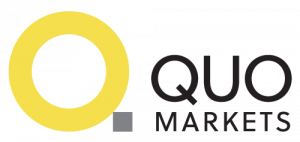When you are told that the S&P 500 is a simple ranking of companies, it seems that it is nothing special. Still, in reality, it has a vital role in investment. Like other stock market indexes, it has many uses that we will explain if you continue reading.
What is the S&P index?
The Standard & Poor’s 500 Index, better known as the S&P 500, comprises 500 U.S. companies selected for their size, liquidity, and representativeness by economic activity, including 400 industrials, 20 in the transportation sector, 40 in services, and 40 in finance. The S&P 500 was created in 1923 when Standard & Poor’s introduced an index covering 233 companies.
However, as it is known today, the selective was created in 1957 when it was expanded to include the 500 largest companies worldwide. The choice of the companies that are taxed within it is made by capitalization and is sufficiently representative. Still, it does not include small and medium-sized companies and omits the dividend effect.
Other more specific indexes, such as the Russell 3000, were created to include this significant group of small and medium-sized companies. The S&P 500 is calculated as a capitulation-weighted arithmetic average and represents most of the market capitalization of the United States.
More about the S&P 500
In short, to talk about the sp500 index is to talk about the world’s benchmark index. The S&P 500 is the most important, setting the market’s pace and being one of the indices investors invest in the most. It is an index that brings together the top 500 companies in the United States, which is also the world’s leading economy. Many others exist, such as the Nasdaq, the Eurostoxx, or the German Dax.
As already explained, these are large-cap companies since they must exceed at least 8.2 billion dollars. For capitalization, 50% of the company’s shares must be listed on the market so that they can be bought by any investor. And finally, and also of great importance, the company that enters the index must accumulate four quarters of positive results, with profits.
Thus, the requirements can be summarized as exceeding $8.2 billion in capitalization. At least 50% of the shares must be in the market, and the company must have four consecutive quarters of positive results. For this to be maintained, the index is periodically reviewed to remove and add companies that no longer meet or are beginning to meet these requirements.
How is the price of the S&P 500 calculated?
As mentioned above, the S&P 500 index is calculated using an arithmetic average. In other words, the index is measured based on assigning specific standard scores to the instruments and the companies considered for its calculation. Followed by adding or subtracting a simple sum to find the possible variations. On the other hand, the American selective, like the Ibex 35, does not add the companies’ dividends in the index’s quotation.
This means that the profits distributed by the companies are not considered; only the price of the companies’ shares is. However, as is logical, shares are not weighted equally in the index. Those with a larger market capitalization have a more significant influence. So, for example, Apple has much more weight than a company with a lower market valuation.
It means the index is more influenced in its movement by those companies that have more weight within the index. The index’s total capitalization is taken into account. And then divided by the capitalization of each company to obtain the percentage. In this way, a stock with a market capitalization of 1 trillion dollars will have a more significant impact than another with a valuation of 50 billion dollars.
Investing without choosing companies
Traditional investment funds are those in which a manager is dedicated to analyzing and selecting the companies to invest in. This type of fund is called actively managed. Finally, indexes are also increasingly used as a low-fee investment method.
Investing in indexes has several advantages, including very low commissions, which have historically allowed for attractive returns. On the other hand, there is a fund that only invests in companies included in a stock market index. This type of investment is known as passive management because it does not have to study and choose the companies in which to invest.




